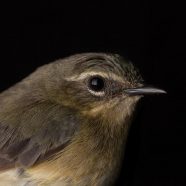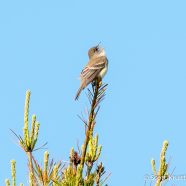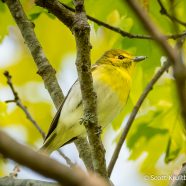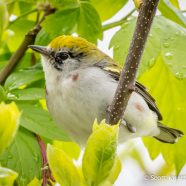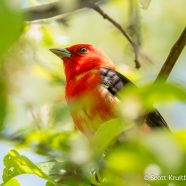Warbler Quiz
Here’s some work for you via RTPI Affiliate Sean Graesser…while setting across North America to write his The Birds of America, John James Audubon discovered 25 species of birds unknown to science at the time. One such discovery was this nondescript warbler that he deemed a different species, and it would become plate 148 in his book. However, it wouldn’t remain a species for long. This bird is in fact a female of one of our more showy North American warblers. What is it? And what did Audubon originally call it?
Read MoreWillow Flycatcher
One of our later arriving neotropical migrants, the Willow Flycatcher (Empidonax traillii) seen here was belting out its song on top of a pine. One of the Empidonax flycatchers, they are basically indistinguishable from the Alder Flycatcher by sight, though the other “Empid” species usually have brighter eyerings. Regardless, you should always use your ears first when it comes to these birds! Far too many people attempt to pin down an identification just by staring at photos later on when birds besides the Empidonax flycatchers, like the Eastern Wood-Pewee, Great Crested...
Read MoreYellow-throated Vireo
The Yellow-throated Vireo (Vireo flavifrons) seen here did plenty of singing and foraging for me on a recent spring morning while his mate tended to their new nest. They were located, as always, on the edge of a large forest, and while they love the cuts they do need sizable, unbroken woodlands. If you take a look at them from afar you may wonder why they have such a plumage…but if you look at some of my photos you may not have to ponder that anymore. What a perfect camouflage, especially in the spring! I have no doubt those looks help the species coax their insect prey into easy...
Read MoreChestnut-sided Warbler
The Chestnut-sided Warbler (Setophaga pensylvanica) is one of the most unique of our warblers in terms of appearance, though this bird is not quite showing all of that chestnut, black or bold yellow yet. It is likely a first spring male that was still coming into his plumage in early May. He was very friendly and cooperative for both photos and prolonged binocular views, allowing a group of birders to enjoy him posing while foraging without the use of any pishing or song playbacks. In my experience the best tactic for spring migratory birding is often just to move slowly, be quiet and...
Read MoreScarlet Tanager
Yesterday was the Noble Proctor BioBlitz Challenge at Hammonasset Beach State Park in Madison, Connecticut. Dozens and dozens of friends, conservationists and scientists hit the field to find all the forms of life they could from 8AM to dusk. Fantastic discoveries were had and wonderful memories were made on a picture perfect weather day – especially for our birds! Three adult male Scarlet Tanagers (Piranga olivacea) delighted the crowds, including this individual. It is certainly red, but not the blood red of more typical males…as we could see in direct comparison with the birds...
Read More



